ING Direct 2009 Annual Report Download - page 12
Download and view the complete annual report
Please find page 12 of the 2009 ING Direct annual report below. You can navigate through the pages in the report by either clicking on the pages listed below, or by using the keyword search tool below to find specific information within the annual report.-
 1
1 -
 2
2 -
 3
3 -
 4
4 -
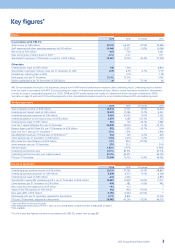 5
5 -
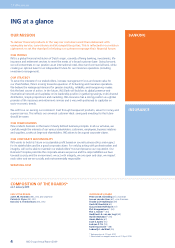 6
6 -
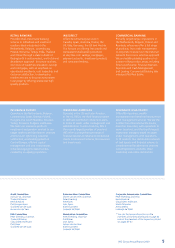 7
7 -
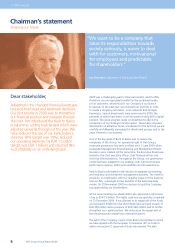 8
8 -
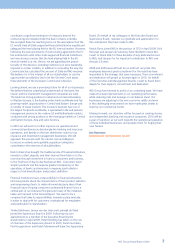 9
9 -
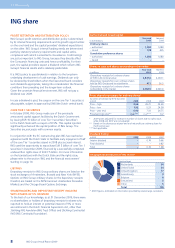 10
10 -
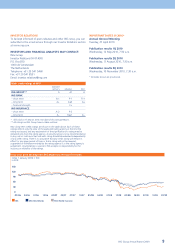 11
11 -
 12
12 -
 13
13 -
 14
14 -
 15
15 -
 16
16 -
 17
17 -
 18
18 -
 19
19 -
 20
20 -
 21
21 -
 22
22 -
 23
23 -
 24
24 -
 25
25 -
 26
26 -
 27
27 -
 28
28 -
 29
29 -
 30
30 -
 31
31 -
 32
32 -
 33
33 -
 34
34 -
 35
35 -
 36
36 -
 37
37 -
 38
38 -
 39
39 -
 40
40 -
 41
41 -
 42
42 -
 43
43 -
 44
44 -
 45
45 -
 46
46 -
 47
47 -
 48
48 -
 49
49 -
 50
50 -
 51
51 -
 52
52 -
 53
53 -
 54
54 -
 55
55 -
 56
56 -
 57
57 -
 58
58 -
 59
59 -
 60
60 -
 61
61 -
 62
62 -
 63
63 -
 64
64 -
 65
65 -
 66
66 -
 67
67 -
 68
68 -
 69
69 -
 70
70 -
 71
71 -
 72
72 -
 73
73 -
 74
74 -
 75
75 -
 76
76 -
 77
77 -
 78
78 -
 79
79 -
 80
80 -
 81
81 -
 82
82 -
 83
83 -
 84
84 -
 85
85 -
 86
86 -
 87
87 -
 88
88 -
 89
89 -
 90
90 -
 91
91 -
 92
92 -
 93
93 -
 94
94 -
 95
95 -
 96
96 -
 97
97 -
 98
98 -
 99
99 -
 100
100 -
 101
101 -
 102
102 -
 103
103 -
 104
104 -
 105
105 -
 106
106 -
 107
107 -
 108
108 -
 109
109 -
 110
110 -
 111
111 -
 112
112 -
 113
113 -
 114
114 -
 115
115 -
 116
116 -
 117
117 -
 118
118 -
 119
119 -
 120
120 -
 121
121 -
 122
122 -
 123
123 -
 124
124 -
 125
125 -
 126
126 -
 127
127 -
 128
128 -
 129
129 -
 130
130 -
 131
131 -
 132
132 -
 133
133 -
 134
134 -
 135
135 -
 136
136 -
 137
137 -
 138
138 -
 139
139 -
 140
140 -
 141
141 -
 142
142 -
 143
143 -
 144
144 -
 145
145 -
 146
146 -
 147
147 -
 148
148 -
 149
149 -
 150
150 -
 151
151 -
 152
152 -
 153
153 -
 154
154 -
 155
155 -
 156
156 -
 157
157 -
 158
158 -
 159
159 -
 160
160 -
 161
161 -
 162
162 -
 163
163 -
 164
164 -
 165
165 -
 166
166 -
 167
167 -
 168
168 -
 169
169 -
 170
170 -
 171
171 -
 172
172 -
 173
173 -
 174
174 -
 175
175 -
 176
176 -
 177
177 -
 178
178 -
 179
179 -
 180
180 -
 181
181 -
 182
182 -
 183
183 -
 184
184 -
 185
185 -
 186
186 -
 187
187 -
 188
188 -
 189
189 -
 190
190 -
 191
191 -
 192
192 -
 193
193 -
 194
194 -
 195
195 -
 196
196 -
 197
197 -
 198
198 -
 199
199 -
 200
200 -
 201
201 -
 202
202 -
 203
203 -
 204
204 -
 205
205 -
 206
206 -
 207
207 -
 208
208 -
 209
209 -
 210
210 -
 211
211 -
 212
212 -
 213
213 -
 214
214 -
 215
215 -
 216
216 -
 217
217 -
 218
218 -
 219
219 -
 220
220 -
 221
221 -
 222
222 -
 223
223 -
 224
224 -
 225
225 -
 226
226 -
 227
227 -
 228
228 -
 229
229 -
 230
230 -
 231
231 -
 232
232 -
 233
233 -
 234
234 -
 235
235 -
 236
236 -
 237
237 -
 238
238 -
 239
239 -
 240
240 -
 241
241 -
 242
242 -
 243
243 -
 244
244 -
 245
245 -
 246
246 -
 247
247 -
 248
248 -
 249
249 -
 250
250 -
 251
251 -
 252
252 -
 253
253 -
 254
254 -
 255
255 -
 256
256 -
 257
257 -
 258
258 -
 259
259 -
 260
260 -
 261
261 -
 262
262 -
 263
263 -
 264
264 -
 265
265 -
 266
266 -
 267
267 -
 268
268 -
 269
269 -
 270
270 -
 271
271 -
 272
272 -
 273
273 -
 274
274 -
 275
275 -
 276
276 -
 277
277 -
 278
278 -
 279
279 -
 280
280 -
 281
281 -
 282
282 -
 283
283 -
 284
284 -
 285
285 -
 286
286 -
 287
287 -
 288
288 -
 289
289 -
 290
290 -
 291
291 -
 292
292 -
 293
293 -
 294
294 -
 295
295 -
 296
296 -
 297
297 -
 298
298 -
 299
299 -
 300
300 -
 301
301 -
 302
302 -
 303
303 -
 304
304 -
 305
305 -
 306
306 -
 307
307 -
 308
308 -
 309
309 -
 310
310 -
 311
311 -
 312
312
 |
 |

ING and the financial environment
Key points
> Global economy recovering after
steep downturn
> Transactions with the Dutch State amidst
market turmoil
> Back to Basics programme has reduced
complexity and increased focus
> Restructuring Plan approved by European
Commission
> First repayment to Dutch State following
rights issue
After the unprecedented shockwave that hit financial markets
in 2008, we initiated transactions with the Dutch State to
strengthen our capital base and reduce our risk exposure, while
redefining our strategic course. Hence, it was clear from the
beginning that 2009 would be a difficult year for ING. Throughout
the year, market conditions remained challenging, but the second
half of 2009 also brought the first signs of recovery. ING’s first
priorities were to stabilise the Company, restore credibility and regain
trust. We thus introduced Back to Basics, a change programme
comprising a series of measures to decrease costs, reduce risk and
capital exposures, and deleverage the balance sheet, with the
ultimate objective of increasing focus on the essence of financial
services and creating a more coherent set of activities. We
simplified the governance structure by operationally separating the
Bank and the Insurer under the umbrella of the Group, and carried
out a portfolio review, which led to a number of divestments.
Meanwhile, we managed to turn around our commercial
performance. Above anything, however, 2009 will be remembered
as the year in which we took the most far-reaching decisions in
the history of the Company. First of all, we set a clear course for the
future by announcing an independent future for our Bank and our
Insurer. In addition, we closed an early repayment agreement with
the Dutch State on 50% of the capital provided in October 2008.
GLOBAL ECONOMY SHOWING SIGNS OF RECOVERY
AFTER STEEP DOWNTURN
From September 2008 onwards, especially after the collapse of
Lehman Brothers, market conditions rapidly worsened. Due to
the impact of the financial crisis, macro-economic prospects at the
beginning of 2009 were very bleak. The steep economic downturn
was reflected in a sharp decline in world trade, asset prices and
industrial production and a tightening availability of credit. As a
consequence, even a repetition of the Great Depression was
considered a plausible scenario. In contrast to the 1930s, however,
policy makers around the world acted swiftly and firmly, by
providing significant economic stimuli and loosening monetary
conditions. Governments took exceptional measures to reinvigorate
financial institutions and stabilise the financial system. As a result,
an increasing number of countries were able to report positive
economic growth in the second half of the year.
World trade seems to have picked up firmly and in many countries
the rise in unemployment seems to have a less adverse impact on
the economy than expected. Nevertheless, the recovery of
the global economy remains fragile. Companies have rebuilt
inventories despite a strengthening consumer and investor demand.
However, as a result of the market interventions to cushion the
impact of the crisis, public finances have been thrown off-balance.
Our Economics Department’s forecasts for 2010 and 2011 indicate
that the global economy will return to growth, albeit at a slower
pace than before the crisis.
Notwithstanding the negative impact of the financial crisis on
the overall economic climate, which clearly weakens the growth
prospects for the financial services industry, the crisis also offers
new opportunities for financial institutions. The substantial
reduction in asset values during the financial crisis has reinforced
customer demand for wealth accumulation and raised consumer
awareness of the need for financial protection.
Back to Basics
1.2 Report of the Executive Board
ING Group Annual Report 2009
10
